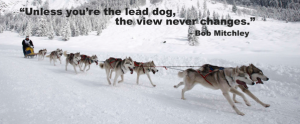It is important to have goals. Goals can focus and guide our drive, but what happens after we achieve our goals? Future planning is necessary to ensure that our goals are simply milestones rather than the end of the road. A lot of time it is easy for a firm to have lofty long range plans and audacious short term goals, but navigating the strategy and tactics to join the two can be tricky.
I have been guilty of this myself. I have been working for two years on completing my Executive MBA. As I come to the end of this program, the question of what comes next has been on my mind a lot. I will admit I have had tunnel vision. For me, this was such a hard to reach goal that I can hardly believe it is almost here! But what comes next? Will I start another equally audacious goal or will I continue working along this path with smaller milestones until I come up with a new big goal? Is this the end? How I choose to follow up achieving my goal is almost as important as the journey to get there.
In business, just as in life, we need to be forward thinking, planning ahead, and ready to adapt to any challenges along the way. There is no single formula or recipe for how to achieve this; however a key ingredient is looking beyond your goals. What happens if you reach your capital campaign goals? Or reach your sales goals? Or growth? Or revenue/users/numbers? We quantify our goals in a variety of ways, and often spend a great deal of time planning and organizing our tactics to achieve them. But a large part of the planning process should consider what happens next.
Planning should be an ongoing cycle that allows for some flexibility as goals evolve over time. Before launching a capital campaign to build a building, start planning how to build it. Before increasing production, know how you will use the increased production, know how you will alter this plan when demand changes, and start planning for your next product offering. Small business can easily fall into a trap where there simply aren’t enough people to do all of these things. Simply reaching the goal takes everyone’s time and energy. An easy way to begin looking beyond your goals is to consider several possible outcomes: not reaching the goal, reaching the goal, and surpassing your goal. What happens in each scenario? How will you react and respond? Is that the path that you want for your business?
Future planning is not easy; the future is unknown. But you and your firm will be better prepared, no matter what comes, if you start looking beyond your goals and consider what comes next.
As for me, I have given it a lot of thought and don’t have all the answers, but have some good ideas. After celebrating graduation with family and friends, I plan on unplugging and recharging for a brief time before anything else. My family has supported me throughout this journey, and I need some time to reconnect with them. We will be taking a
road trip, doing some backpacking, and catching up on sleep. Beyond that, I know that I will enjoy applying a better understanding of leadership, management, and business to my work thanks to the knowledge gained in my MBA.

I will be taking a short break from this blog, but plan on returning after some travels. I am sure that in my travels I will see things through the business lens that I will be eager to share with my readers, so I am looking forward to continuing our discussions on leadership, life, and business. In the meantime, remember to plan for what comes next!












